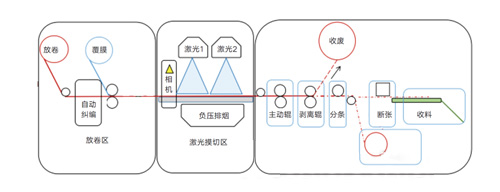Why Does Powder Appear on the Ink Rollers, Leading to Poor Ink Transfer?
In the offset printing process, water and ink are two essential materials involved in ink transfer. Water refers to the fountain solution, while ink is the offset printing ink. Only when both water and ink are properly transferred can high-quality prints be produced. However, water-ink transfer is affected by many variables, making its control one of the most challenging aspects of offset printing. One common issue that arises during production is the appearance of powder on the ink rollers, leading to poor ink transfer.
The term “powder on the ink rollers” refers to a situation in which powdery particles appear on the ink rollers after the printing machine has been operating for a while. This results in ink depositing in unwanted areas, such as on inking rollers, or even deinking from the rollers, causing poor ink transfer. This printing fault is mainly due to the fact that the powdery particles on the rollers have either hydrophobic (ink-attracting) or hydrophilic (water-attracting) properties. But what exactly are these powdery particles, and where do they come from?
In the offset printing process, the main substances continuously entering the printing machine are the substrate, the ink, and the fountain solution. Therefore, these powdery particles must be brought into the ink-water transfer system either directly or indirectly through these materials.
In general, if the surface quality of the substrate is poor, powdery particles may be directly introduced into the printing ink-water system. For example, if the surface of the paper carries a large amount of paper dust or other particulate matter, these impurities can transfer into the ink-water system during the impression process, leading to the “powder on the ink rollers” issue. The solution is to replace the substrate with cleaner materials. Additionally, if the paper surface is clean but the coating on the paper lacks sufficient density, powder shedding may occur during the impression process. This powder can transfer through the printing plate into the ink-water system, causing similar issues. In this case, the problem can be resolved by reducing the press speed, lowering the ink viscosity, or using higher-quality paper.
Besides direct introduction of powdery particles from the substrate, a chemical reaction between the fountain solution and ink may also lead to the formation of calcium precipitates, indirectly introducing powdery particles into the system.
Explore our book printing services on the Printing in China page.
The primary component of the fountain solution is water, and water hardness varies by region. Soft water typically has a hardness of 0-30 ppm, while hard water has a hardness above 60 ppm. When water hardness is higher (i.e., when there is more calcium ion content), calcium ions (Ca²⁺) can react with the resin in the ink to form calcium soaps. When these come into contact with the acid in the fountain solution, calcium salts like calcium citrate or calcium phosphate may form. Calcium soaps are hydrophobic, leading to ink deposits in unwanted areas, causing roller crystallization and poor water and ink transfer. On the other hand, calcium salts are hydrophilic, which obstructs ink transfer and can lead to roller deinking.
The solution to this issue is to use soft water with low calcium ion content when preparing or diluting the fountain solution. Additionally, choosing fountain solutions that can effectively reduce calcium buildup will help mitigate the negative effects caused by excessive calcium ions.

Comments
No comments yet. Be the first to react!